-
Posts
6,486 -
Joined
-
Last visited
-
Days Won
9
Content Type
Profiles
Forums
Blogs
Gallery
Events
Store
Posts posted by Brian Wolfe
-
-
Never go to a pawn shop unless you want to give it away. Better a dealer than a pawn shop...I cannot believe I said that! If you must sell these two items (keep them together for the sake of Pete!) see if you can find a reputable auction house. Another thing about the way the world works as far as pawning items. Once pawned because you absolutely need the cash it is not likely you will come up with the money to purchase it back in the allotted time before the item becomes property of the pawn shop; that's just not being rational. Look to other ways to raise the cash you need and keep the dagger. Cars come and cars go, that dagger, once gone will be gone forever.
Regards, and good luck.
Brian
0 -
People get the strangest ideas about how to "improve" an antique arm and probably the only thing worse than spraying the scabbard with silver or aluminium paint would have been to have used gold paint. Either way this can be removed and the original look restored with a little work. I think the club has upholstery nails which is not to say this is not original. At the time soldiers used what was at hand to make such items. I would not hesitate to purchase such an item that looks like this, if I were looking to add one to the collection, as it has the "look" of authenticity. I could more than likely turn out such an item in my shop but to get the look of the ages would be just about impossible. And why one anyone want to fake such an item in the first place. My opinion is that this is an original. Also remember that any specimen one might find on "Images" on the internet may not match this one as they were, at times, ad hoc, that is to say made individually or in small runs as needed.
Nice find.
Regards
Brian
0 -
Hi Simon,
Thanks for your comment. Sorry for the delay in replying, my computer passed away after a long illness and it took a week to get a new one. If I am to be honest, it took four days to actually get a new computer and three more days to figure out all of the updated software.
It would indeed make an rather less expensive collection to put together a nice grouping of short swords from different countries. The LTC sword would be one of the easier specimens to get in mint conditions for the reasons given in the article. The British had several saw backed pioneer swords as well as drummer and bandsmen swords; though there seems to be little evidence of their use as true weapons.
At the moment Indian swords are a very good purchase for the money, at least here in Canada. Like many collectables I am sure the prices will go up as soon as people realise that they are priced well below other swords of similar quality. A post on the "best bang for the dollar, or pound" as it relates to the sword market might be interesting.

Regards
Brian
0 -
The Land Transport Corps Sword
Land Transport Corps Sword
Perhaps one of the most interesting swords of the British military was the Land Transport Corps sword, not because of the campaigns in which it was used but for the fact that it was never officially issued to any troops.
Historical background:
One of the problems throughout the history of warfare has been that of supplying the troops with food, material, weapons, shelter and clothing to name a few of these necessities. When the campaign is at or near home the supply is much easier, however, during the Victorian period starting in 1837 the Wars of Empire were far afield. During this time the task of provisioning the troops fell under the Commissariat Department, a civilian body with no formal establishment of supervision. Earlier attempts at supply were undertaken by the Royal Wagoners, and during the Napoleonic Wars the Royal Wagon Train which were comprised of civilian personnel. These attempts were largely inadequate and any attempt to train a specialized corps was undone by the government as these corps were disbanded during times of peace. The use of civilian drivers was also quite common in India, used by both the East India Company and the Queen’s Indian Army. Again, during times of peace these civilian employees were disbanded, thereby saving on costs, which was an important objective. However, when once again the need for the civilian drivers was required there was never any guarantee that either drivers or wagons would necessarily be found in sufficient quantity.
This lack of sufficient transport was particularly felt during the Crimean War of 1854 – 56. When the British expeditionary force landed at Calamita Bay in 1854 there were no pack animals or wagons available due to the lack of proper forage for the animals. The only horses landed belonged to the artillery, cavalry and officers. The first transport that was available to the British was in the form of captured Russian wagons. The capture of Balaclava finally offered a proper landing site; however there were still no means of moving the much needed supplies the eight miles to the front line at Sebastopol. This left tons of supplies to rot “on the docks” at Balaclava.
Conditions worsened with the winter of 1854 and what supplies that reached the troops was on the backs of Regimental Officer’s horses and men on foot. With this the Commissariat Department collapsed in late 1854 followed by a Royal Warrant in January 1855 creating the Land Transport Corps (LTC). Unfortunately the attempt to reorganize the former Commissariat Department with the new LTC, which consisted of 8,000 men plus several thousand civilians, was a limited success. The same lack of discipline coupled with lack of experience with horses and an unfamiliarity with outdoor life resulted in one of the highest mortality rates from disease and exposure recorded for any other corps during the war. The LTC never overcame these shortcomings during the war and in 1856 they were reorganized to form the Military Train.
The Land Transport Corps Sword:
It would appear that someone held great expectations of the Land Transport Corps as a sword was commissioned for their use. This is particularly interesting as there is no evidence that any sergeants or other ranks of the former Royal Wagoniers, The Royal Wagon Corps or the Royal Wagon Train ever carried swords; probably due to their non-combatant role and were essentially civilians in uniform. Possibly it was thought that since the 8,000 making up the LTC were members of the military they should be appropriately armed, however this is pure speculation. The Land Transport Corps sword seems to have been patterned after the French infantry sword Model 1831, called the “cabbage chopper” by the French troops.
Blade length and width: 22½ inches by 1 ½ inches (specimen shown is 1 3/8 inches wide)
Blade type: Single edged (Robson records this as double edged, however the specimen shown in his book as in this specimen shown below, is plainly single edged)
Guard: Brass
Scabbard: Black leather, brass locket with frog stud and chape.
Sword weight: 2 lb. 1 oz.
Made by Kirschbaum, Solingen.
Bibliography:
Knight, Ian, “Go to your God like a Soldier”
Robson, Brian, “Swords of the British Army, Revised Edition”, pg.240
Article submitted by Brian Wolfe
Specimen shown below from author’s collection.
0 -
Bent and broken Sword Blades
Bent Blades
During the time of the Indian Mutiny (1857) there was a great many reports of British swords failing in battle. These, I believe, were the Pattern 1853 and in some cases the Pattern 1821 Cavalry Sabre which was in use at the time. These failures were in the nature of broken and bent blades in addition to the more common complaint of failing to cut as covered in an earlier post. As a thrusting sword the Pattern 1853 tends to flex a bit too much to be an effective thrust centric weapon. Upon contact with an enemy wearing a thick coat and perhaps several layers of clothing the blade will bow rather than remaining straight as would a stiffer blade, such as the later Pattern 1908 Cavalry Sabre. This could result in breakage or severe bending of the blade; a bend that may very well remain until time allowed the trooper to straighten the weapon. Of course in the heat of battle a severely bent blade could well result in the death of the trooper. All Pattern 1853 blades would certainly bend and any blade that would bend had the potential to break if stressed beyond the tolerance point. As I have mentioned before, any sword blade can bend or break given the correct circumstances. Even the highly praised tulwar used by the mutineers was noted to have bent from time to time. If one takes into account the number of bent British blades compared to bent tulwars as the determining factor as to the quality of British blades then you have missed one important fact. Tulwars were only designed to cut and even though it could be argued that it is technically possible to thrust with the tulwar it is extremely difficult. This is evident upon simply looking at the sword and the direction the tip would be pointing if the tulwar was used to thrust. The British Pattern 1853 was designed as a cut and thrust weapon. The British trooper was encouraged to employ the thrust over the cut, and in the case of the blocking of the enemy’s cut followed by a thrust, the blade if it failed to penetrate the target could very well flex and therefore possibly develop a bend. This is magnified if the trooper was on the gallop and using his sabre in the same manner as a lance, upon giving point, failure to puncture through thick clothing cold very well bend or break the blade. A good deal of this, penetration or deflection, depended upon hitting the target at as close to 90° as possible. Catching the side of the target would increase the chances of blade failure. Another failure of the 1853 sabre was the handle, or grip, which was circular or round in cross section. This made “indexing” the blade, that is to say keeping the sharp edge of the blade in a forward position, more difficult. The proceeding sabre, the Pattern 1821, had a grip that was more oval in cross section. A practical example of this can be found in any kitchen, the butcher’s knife. Using the butcher’s knife or any kitchen knife would be most difficult if the handle was a cylinder, especially if the hand were slippery. There are several reports of troopers’ hands becoming so raw from the use of the sabre that their palms would bleed making the indexing very difficult, if not impossible. The cavalry trooper of the 19th century did not wear gauntlets as did their predecessors of the 17th and early 18th centuries. This problem was taken into account in later patterns of British cavalry sabres with the introduction, or I should say the re-introduction, of the oval cross section grip. Another problem mentioned in an earlier article was sharpness. A dull blade will cut into a body even if the sword strikes the target while the blade is not indexed properly. A dull blade will not cut into the target and tends to twist in the trooper’s hand. This causes the sword to strike on the flat increasing the potential for the blade to bend or even break. My earlier post suggested that the cause of dull blades was the use of a steel scabbard and the rocking motion of the horse would grind the sharp edge against the inside of the steel scabbard continually dulling the edge.
Some good accounts are given in the book “Waterloo Voices 1815”, by Martyn Beardsley from letters written by the soldiers who were there, that tells of having their swords sharpened and then boarding ships bound for French ports and the eventual Battle of Waterloo; I will touch on this point a bit later on. An example taken from the book noted above attests to the sharpness of the British swords at Waterloo.
“Anonymous account,
Shaw in the Horse Guards, of pugilistic fame, was fighting seven or eight hours, dealing destruction all around him; at one time he was attacked by six of the French Imperial Guard, four of whom he killed, but at last fell by the remaining two. A comrade who was beside him a great part of the day, and who is the relater of this anecdote, noticed one particular cut, which drove through his opponent’s helmet, and with it cut nearly the whole of his face at the stroke”.
This shows the sharpness of the British Pattern 1796 Cavalry Sabre used during the Battle of Waterloo, not present in many of the cavalry swords of the 1857 Indian Mutiny period. The reason for the difference is, I believe, in the mention earlier of getting the sabres sharpened in England and then directly boarding ships bound for the continent. This eliminated the long horse rides to the battle site as would have had to be endured during most of the actions in 1857.
Had the sabres of the Mutiny been sharpened and then used shortly thereafter I believe the question of dull and even poor quality blades would have been nearly moot.
The images below showing the Indian tulwar and the Pattern 1853 cavalry sabre indicates the direction of thrust (yard stick) through the grip to the target. As can be seen the tulwar’s point is well away from the line of thrust. It could be argued that the tulwar could be used in a curving motion to deliver the point into the target but this would be most effective if the target had just passed by and the Indian Mutineer was attempting to strike the British trooper in the back, as happened from time to time. The point of this is to say that the Tulwar is a cutting weapon and not a thrusting one as is the British Pattern 1853.
0 -
The 1926 General Strike
Due to the First World War there had been a great demand for coal in the United Kingdom to fuel the war materials industries. This resulted in a depletion of the rich coal deposits that had supplied the UK so well for many years. During the War exports of coal from the UK dropped resulting in a void that was quickly filled by other countries such as the United States, Poland and Germany. As coal prices continued to fall, in the post War years, Germany was allowed to re-enter the international coal market and started to export “free coal” as part of their reparations for the Great War. These German exports further hurt the export of coal from the UK and profits dwindled even further. In a move to buoy up profits the mine owners decided to lower the miners’ wages and extend the hours of work.
The result was that on 4 May, 1926 the Trades Union Congress (TUC) called for a General Strike with the intention of forcing the British government to take action to prevent wage reductions and help the 800,000 locked out coal miners. This resulted in 1.7 million workers walking off the job and joining the strike. As the strike gained momentum people both in the government and the TUC itself feared that the General Strike could escalate into a wide spread revolution. King George V took exception to this suggestion of “revolutionaries” and said, “Try living on their wages before you judge them”. The TUC made a statement in an effort to ease the tension the public might be feeling in regard to such a wide-spread action and allegations that there were revolutionary elements in the trade unions, “We are not making war on the people. We are anxious that the ordinary members of the public shall not be penalized for the unpatriotic conduct of the mine owners and the government”. In a cautionary move the government put in place a militia of special constables called the Organization for the Maintenance of Supplies (OMS). Their purpose was to maintain the peace on the streets.
There was intervention on a couple of occasions by the army; however, it was decided in a move to prevent escalation of violence, that the soldiers were to be unarmed. On 7 May, 1926 the TUC met with government representatives to work out a set of proposals to end the strike. On 12 May, 1926, nine days after the strike had been called, the TUC announced its decision to call off the strike. The end result was that many men were not called back to work as the government had stated that they did not have the authority to force the mine owners to employ all of their former employees. Those who were called back did so at lower wages and longer hours, which was the original intention of the mine owners.
This was the only general strike in the history of Brittan and many trade unionists felt it had been a mistake, opting for political and legal resolutions in the future. Those OMS special constables were relieved of their duties later in the month of May and today we have certificates of appreciation issued to those Special Constables as lasting artifacts of The General Strike of 1926.
Regards
Brian
0 -
Thanks for sharing this with us Peter, it is a first for me as well, Simon.
Regards
Brian
0 -
Hi Dave,
I think these were common to many police services through the WWI and WWII period. Most of the ones in my collection have the stripes running horizontal with a couple running vertically like the one you show above. I also have one with red and white stripes and it is for a Special Constable Inspector. I like to think the ones like yours and the especially the Inspector's one I have are to the Met, but that may only be wishful thinking as I have no proof to base a solid opinion; and we both know that would not hold up in court.
 I have some photos (somewhere) of these being worn on civilian suits as the issue of so many uniforms during the war years to all of the new SC's would have been expensive.
I have some photos (somewhere) of these being worn on civilian suits as the issue of so many uniforms during the war years to all of the new SC's would have been expensive.
Regards
Brian
0 -
That 100 lot may be Mervyn's cousin, Roy (if my memory serves me well), selling off the estate assets. I think it would be a good idea to contact that seller to see if he would sell you one copy. I would offer to sell you mine but I would have to have $1,000,000. to let it go.

While not worth a million it is very worth while owning one.
Regards
Brian
0 -
Quality:
One of the flaws attributed to the British cavalry swords of the 1850’s was that the blades were of very poor quality. These, it was said, were made in Germany and sold to sword makers in Britain at a lower price, ending in a poor quality weapon. True this no doubt happened and in fact some sellers would place proof marks on blades that were never put through quality assurance testing. However, there were many very good quality blades produced in Germany for the British and even the Indian market. You can find Indian tulwars on the collector’s market today with British, German and Indian made blades of exceptional quality. I have an example of a Pattern 1853 Cavalry Trooper’s Sabre in my collection that is marked with a visored helmet motif to indicate the German maker, Kirschbaum, and also stamped with an “I” on the back edge of the blade by the British indicating it was for use by their troops serving in India. This seems to be an excellent quality blade. I do not believe that the British sword blades, even those from Germany, were of poor quality overall, some no doubt were, but not to the extent that was reported by the press of the day.
So why would some officers even use a poor quality blade in the first place? We need to remember that at this time period positions in the army or cavalry were purchased. This meant that the new officer, while highly educated and socially refined knew little to nothing about what was expected of him on the battlefield. In addition to this the purchase of his entry rank most likely left him with little to spend on uniforms (he needed several) and other equipment such as his sword. Firearms were not issued to officers and they were required to purchase their own if indeed they wanted to carry one. When a young officer went to a “tailor” to be outfitted with his uniform he often had the opportunity to purchase his sword from the same supplier. If the tailor was out to maximize his profit margin then the swords he was offering might vary greatly in their quality. Even for the common cavalry trooper the quality might vary depending on which blade maker was supplying the sword makers in England who then supplied the military with the swords that were then issued to the troopers.
The practise or purchasing your rank in the army (including cavalry) sounds rather ridiculous today and I will admit that I often wondered how this came to be. While I was researching this post I delved into this question and found what might be the answer. I’ll admit that the solution to my question comes from only one source so you decide whether you want to accept it or not. During the English Civil War c. 1650 Oliver Cromwell (leader of the opposition to the King) made changes in the military, one of those changes was to promote officers through the ranks based on merit. This seemed to be a very positive change and in today’s thinking makes a great deal of sense. However once the Civil War had settled down and a new King on the thrown it was noted that the army officers held rather revolutionary ideas and were at the same time viewed as being rather crude and brutish. This was when it was decided that in order to fill the upper ranks of the military with members of the gentry the government would offer to sell rank to the privileged. The so-called lower members of society would be excluded and the officer’s positions filled with men of quality, better educated and refined; in other words more apt to support a monarchy than make moves to copy the French and revolt. Much has been written about the problems associated with the purchase system but in all fairness many great military leaders came from the upper class and purchased their entry level rank; The Duke of Wellington being one of the best examples.
In the forward to Janusz Jaroslawshi’s book, “The British Pattern 1796 Cavalry Sword and Other Derivatives”, Tadeusz M. Klupezynski writes,
“There were special price lists of specified amounts that had to be paid in order to obtain a certain officer rank in the individual regiments. Such a dealings did not miss as well as Arthur Wellseley Wellington, who twice- by borrowed money- bought himself a promotion to higher rank to accelerate his career in military advancement. Perhaps, without these “purchases” if the indigent Irish nobleman had been promoted only in connection with the military service, the transformation of the British army would never have happened, there would not have been a Waterloo and the Napoleonic era would have had a completely different course, and perhaps over the Houses of Parliament in London would be a tricolor French flag today.” [sic].
Certainly a sobering thought and perhaps the most positive reinforcement of the success of the purchase program for its day. While it is good to point out the positive side of a topic that has been held as a negative condition of the early British army we shouldn’t dismiss this as purely politically driven criticism. The successes and achievements of the British army of the distant past owes much to the few brilliant leaders and much more to the perseverance and determination of the common soldier.
Regards
Brian
0 -
Thanks Simon, my intention is to make this section a "go to" destination for people interested in British swords and their use. I am a bit concerned that there seems to me to be too little interest in British history here on the GMIC. I could be wrong but the only way to correct that. providing I am correct, is to start to post about British history rather than sitting here complaining; which is what old guys like me do best.

Regards
Brian
0 -
Hello Tulls and welcome to the GMIC. Good to see another Australian member, I am Canadian and if we can match the number Australian and Canadian members we can keep the earth in balance.

Regards
Brian
0 -
The Indian Tulwar
The curved sabre used in India for centuries, known as the tulwar, was the preferred, non firearm, weapon used by the Indians opposing the British during the Sepoy Mutiny of 1857. The term “Sepoy” is the Indian equivalent of the British rank of Private. I will not go into the causes and actions taken during this uprising as we are only dealing with the weapons themselves.
A tulwar is a curved sword that is best suited for the cut or slash as opposed to the thrust or “giving point”. The British believed that the Indian schools of swordsmanship did not teach giving point, possibly due to the extreme curve of the blade making it look like it could not deliver a thrust if it had to. This was not completely true as while a straight forward thrust was not as practical as the cut it could be done. In fact it has been documented that British troopers upon missing their intended target and in passing the antagonist were stabbed in the back when the Indian struck in a curving arc thereby actually giving point. The myth was based on false assumptions drawn from the ignorance of the vast variety of Indian swords. Fighting schools throughout India not only taught the use of the curved tulwar but many forms of straight bladed swords designed primarily for giving point, or thrusting. There was also no need to spend a great deal of time teaching how to parry with the sword as the Indian fighters used a buckler, or small shield, with which they parried their opponent’s thrust or cut then delivered their own strike.
The shape of the blade in cross section was also a long thin taper as opposed to the steeper bevel of European sword blades. It could be argued that the tulwar was more fragile and they did on occasion break but overall they held up very well. Any sword will break if the block or parry is made too close to the tip rather than on the bottom one third of the blade. The closer to the hand guard the better. Any blade might also break if struck hard enough on the flat of the blade. This was almost impossible for the tulwar due to the shape of the handle allowing for better control, or indexing, of the blade.
The cut of the tulwar was delivered mainly with the forearm and wrist action. Literally, with a flick of the wrist an Indian swordsman could remove an enemy’s hand. One practise of the mutineers was to slide under the British cavalry horse from the side and with one slash open up the horse’s belly. There are stories of heads being severed in half horizontally just above the eyes and limbs or legs being decapitated are not uncommon. Interestingly, the British took a lesson for the Indians and started to wrap their head gear with twisted lengths of cloth forming a turban to protect from tulwar cuts. Even the cork or pith helmet alone was some protection from tulwar slashes.
So why were the Indian tulwars able to maintain their sharpness while their British counterparts burdened with dull sabres? Again it has nothing to do with the steel used or the techniques of sharpening. It is the method of carrying the tulwar that is the secret. Indian tulwars are carried in a wooden scabbard wrapped in leather or cloth then slid into the waste belt. By not having the sharp edge rubbing against a steel scabbard day in and day out the tulwar maintained it edge. Another advantage of the wooden scabbard was in the ease or repair or replacement over the steel tube scabbard of the British trooper.
Regards
Brian
0 -
Pattern 1853 British Cavalry Sabre
The 1853 Cavalry Sabre was designed as a “cut and slash” weapon with the emphasis on “giving point”, that is to say, for thrusting or stabbing and not cutting (slashing). The British were almost obsessed with designing the perfect sword and a thrusting sword was considered superior to the cutting sword. There were few complaints regarding the ability of the 1853 to perform well as a thrust centric weapon, the complaints came in regard to its ability or lack of ability to be a good cutter. At times on the battle fields of the Sepoy Mutiny a number 7 cut (straight down) to the head of an enemy wearing a thick turban would render the combatant unconscious or dead due to massive head trauma. In other words the 1853, in this case, didn’t cut but acted as a bludgeon, bashing in the poor fellow’s head.
One of the aspects of the thrust (giving point) that was supposedly better than a cut was that a cut was not necessarily always fatal; however the thrust had a greater chance of rendering your opponent dead. Napoleon was said to have exclaimed, “Ne sabrez pas! Pointez! Pointez! ( No sabring! Give point! Give point!). On the other hand there are many accounts of a soldier running an opponent through and the fellow still advancing right to the hilt and dealing a death blow to the soldier, both to die on the battlefield together. A cut tends to stop or slow down a charging opponent better, even if he was to survive the first cut he would most likely be subjected to a thrust once he was down or at least stopped.
So why were British cavalry sabres always dull? Well, they weren’t, at least not to start with. All swords and sabres were sharpened to razor sharpness before starting out on campaign. There are many accounts of a British cavalry trooper completely slicing an enemy in half diagonally. One of the favourite “sword tricks” of the British was to slice a silk handkerchief in half by simply laying the cloth on the blade (sharp edge up) and with a slicing motion severs the handkerchief in half.
The problem was not with the sharpening it was with the means of carrying the sabre while out on campaign. British cavalry troopers and officers always carried their sabres in a steel scabbard with the blade facing the ground. The sharpest blade soon becomes quite dull under these circumstances.
As I have stated the Pattern 1853 was not designed as a cutting only sabre but as a thrusting weapon. One of the problems with this is that, it was said, once a trooper got into a melee, or close combat, the natural urge to slash became overwhelming. I personally think this was out of necessity as you need space to thrust with a 35 inch basically straight blade. Experiments done here at “The Home Office” (aka my back yard) shows that you need at least 24 inches between your body and your opponent’s body in order to give point. This is if you can successfully draw your sabre back far enough to get that space needed. On the other hand if you slash using your left hand pushing on the back of the blade to give the sabre the proper cutting weight you reduce that space to around eight inches. Of course at that point you are pretty well grappling with your enemy, which often happened.
In summary the Pattern 1853 Cavalry Sabre was every bit as good as the tulwar provided it could be kept in a state of razor sharpness. This, keeping in mind the sabre action is more of an arcing cutting slash rather than the pull and/or thrust slash of the tulwar. This we will discuss in the next instalment.
0 -
Were British Cavalry Swords Substandard?
With the ending of the Napoleonic era (1815) peace settled over the island of England, but not over the whole of the Empire itself. Many, if not most, historians will tell you there were numerous “small wars” flaring up keeping the British military busy putting out the flames before they turned into infernos. With this era, the mid 1800’s, there came the Bayonet and Sword Scandals. I covered the Bayonet Scandal in a resent blog but left the talk of swords, cavalry swords in particular, for discussion in this area of the forum. I would say that the Indian Rebellion or Sepoy Mutiny of 1857 saw more use of cavalry and therefore cavalry sabres than had been seen since the Battle of Waterloo at the end of the Napoleonic Wars mentioned above.
Before we go any further I feel I must state why I am referring to this period in the long history of India as a “mutiny” and not a war of independence or a general rebellion of the Indian people as a whole against the British Raj. While the struggle involved more than just Indian soldiers and troopers, there was the issue of a mutiny, that is to say any soldier upon taking an oath of allegiance is bound by that oath; deviation from those terms constitutes an act of mutiny. I make no political observations by that statement only to say that for the sake of this discussion it is one military body against the other and involves the swords of both sides regardless of which side wields them.
One of the criticisms of the British Cavalry Sabre was that it was consistently dull, being unable to maintain a sharp edge for any length of time. Compared with the Indian tulwar, the sword of choice by the Indian mutineers and their supporters, the British sabre was often called a “bludgeoning” weapon by its critics. Another flaw according to some was the incidences of the sword blade bending and even breaking upon impact with the enemy’s weapon. The complaints regarding poor hand protection offered by hand guards of the era is a subject I will reserve for future posts.
Photo below shows the Pattern 1853 British Cavalry Troopers Sabre and an Indian Tulwar which we will use for the first discussion.
I have selected a tulwar that, while it looks quite a bit shorter than the British Cavalry Sabre (and it is) it is at the same time one of the larger tulwars you might find. I do have a larger example which almost matches the 35¼ inch British sabre blade but I wanted discuss the two sword types that might have opposed each other on the battle field as my examples.
0 -
British Swords Spoken Here.
For some time now it has been my intention to write several posts regarding the British sword, keeping them as brief as possible, I think shorter posts are best. Please feel free to leave comments as well as your opinions; this is intended to be a learning exercise, for me as much as I intend it to be for you. It should be stated straight away that I am not an expert on swords, their identification, history or their use; just an obsessive enthusiast.
My background is in martial arts which includes the proper use of the Japanese Katana in the style of the 1650’s which involves, for lack of a better term, the “quick draw”. This involves drawing your weapon and making an upward strike, left to right, or horizontal cut again left to right. After which you are going to block your opponent’s sword strike provided either you or your antagonist are still “alive”. Of course no one is actually “fighting” or sparing in this form of practise. This form is called Iaito. The other form I studied is called Toyama Ryu and is sparing with dull steel blades, actually we used wooden swords called a Bokken. You can check out a good video on YouTube under Toyama Ryu. It is a lot harder than it looks when you are on the Dojo floor in front of your Sensi and the class. Yes the white belts always seem to back up a lot; really makes you work hard to “kill” the little buggers.
The other sword form I studied was European fencing with an Epee. The word epee basically means “sword” and is the heaviest of the three swords used in the sport; the three swords are, foil, epee and sabre. The foil and the epee are thrusting weapons only and only a hit with the tip counts. The sabre scores with either the point or the edge of the weapon just like the real sabres of old. A word of warning; I started fencing far too late in life (mid 30s) and today my right knee (forward knee if you are right handed) gives me a lot of trouble.
My point for giving my credentials is that I do know something about swords and their use, not just some of the history that I have read in books. From Japanese sword use I learned the cut or slash and from Western style fencing I learned how to “give point” or the thrust. I chose the epee as it was the closest thing to using a British small sword of the mid to late 1700’s. Both systems taught me how to block or parry an opponent’s sword.
My intended range of my posts will be from around 1796 to 1912, which takes in the Battle of Waterloo up to the last Pattern developed, the 1912 Officer’s Cavalry Sabre. Anything older such as medieval broad swords is just too expensive to own and I like to own what I study. If you like the older sword reproductions then two thumbs up from me but they are just not within my interest range. I may also talk about other swords from different parts of the world in giving examples of parallel sword development, evolution if you will, in different countries at approximately the same time period. In these cases I may have to use pictures from books as well as photos from books of swords I have yet to acquire. I’ll always give credit to the book and the author.
So If I have not frightened you off or bored you to tears let’s talk British swords.
Regards
Brian
Part of my collection is pictured below.
0 -
If any of the other members have Japanese door badges I would really like to see them so please post away.
Regards
Brian
0 -
Supporting Member of the Manchukuo Red Cross Society 1938-1945
This is a porcelain door badge, a specimen I am very fortunate to own as these must have been quite fragile.
Imperial Japanese Seafarers Relief Association (Nihon Kalin Ekisaikai)
To finish off my collection here is a post war issue door badge and pin backed badge.
I have other Japanese Red Cross associated items that I may post at a later date on a different thread.
"Full Member of the Japanese Red Cross Society".
0 -
-
-
This is a wooded badge.
"Member" Patriotic Women's Association (Aikoku Fujin Kai)
Imperial Military Reserve Association (Teikoku Zaigo Gunjinkai) Member.
This door badge is wooden.
"Member" of the Imperial Navy Association
This is a wooden door badge.
Imperial Friends of the Military Association.
Located in Ishindencho Mie Prefecture
0 -
Wounded Soldier's Wives Association
I should have stated that most of the badges in my collection are made of a light weight metal unless noted otherwise.
In this case the badge is made of wood.
Bereaved Family WWII KIA
"Full Member" of the Imperial Time Expired Soldier's League.
"Member" of the Imperial Time Expired Soldier" League.
0 -
Japanese Door Badges
I’ve followed this section for quite a number of years now yet seldom post mainly because I don’t have a lot that hasn’t been shown many times before. While I never get tired of seeing yet another Golden Kite much like the Iron Cross guys I rather thought that perhaps not everyone feels that way. On the other hand I haven’t been very supportive of the Japan section so with that in mind I am posting specimens from my small Japanese Door Badges collection.
As an introduction I’ll quote the section from “In the Name of a Living God”, Paul L. Murphy & Steven L. Ackley, Chapter 13 as I could not say this any better.
“Most of the societies whose badges as featured in this book issued door badges to their members in addition to the normal membership and merit awards. These were intended to be affixed to the home entrance to indicate that the owner was a member of the relevant society. The use of door badges continues in modern Japan although most are now in the form of adhesive stickers.
The badges used before 1945 were made from a variety of materials and a sample of badges from the main organizations follow. Most door badges incorporate some society badge and the membership class representation. In some cases they also have the recipient’s name.”
I have a few of these so it may take several posts to get the whole collection up, more a matter of my slow photography skills then any vast number of specimens. So please be patient.
Regards
Brian
The first specimen (below) is, “Member” of the Greater Japan Wounded Veteran’s Association. (An early badge, 1913 – 38)
Sorry About that last photo, it didn't look like our forum was going to accept Photoshop sizing and I panicked.

This badge is to a member of the Wounded Servicemen's association from Chiba Prefecture.
0 -
Germany’s MP40
No other firearm is as iconic with WWII and the Third Reich as the 9mm submachine gun, known as the MP40.
Designed in 1938 by Heinrich Vollmer it was heavily used throughout WWII on all fronts by infantry and paratroopers. Due to its relatively slow rate of fire, 500-550 rounds/minute and using a light round, the 9X19mm parabellum round it was a very accurate weapon. Like most sub machineguns the range was fairly limited with an effective range of 100-200m and a maximum of 250m, however within the effective range it was quite deadly.
The specimen shown is from my collection.
Regards
Brian
0





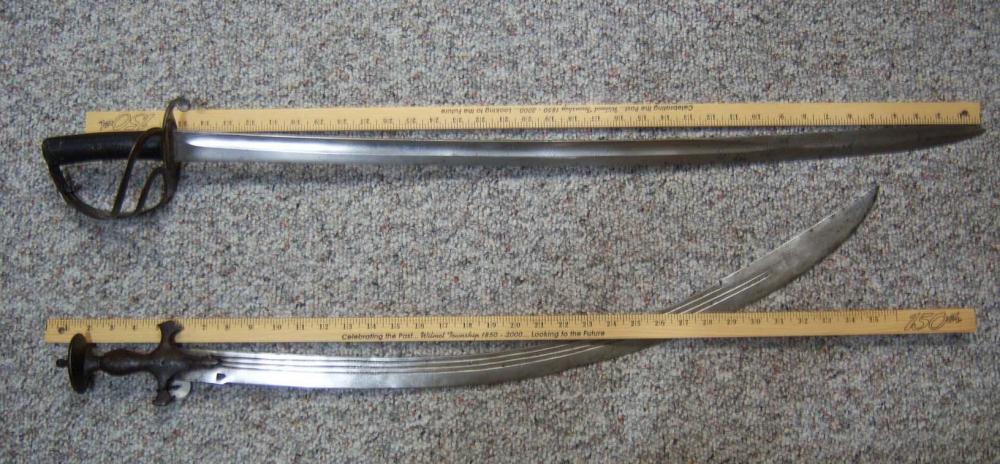
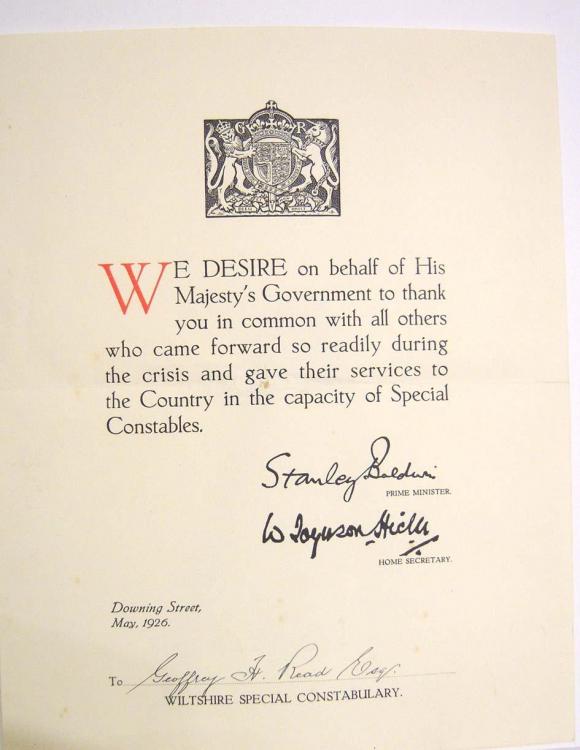
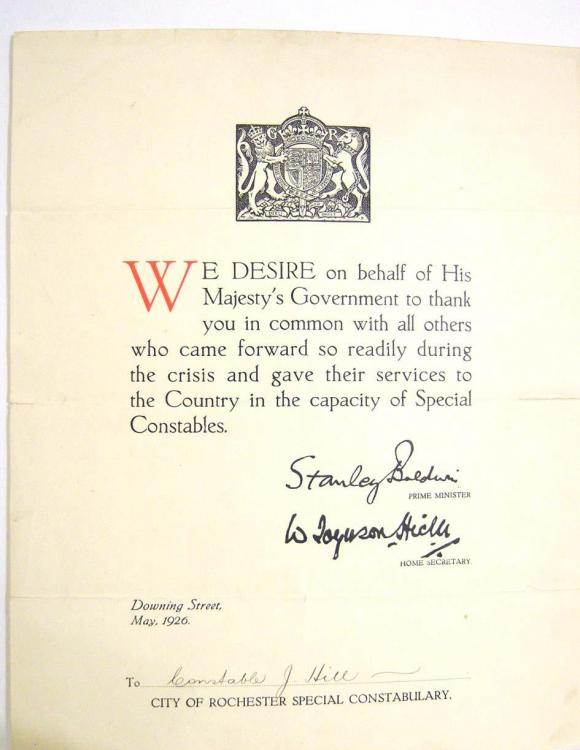
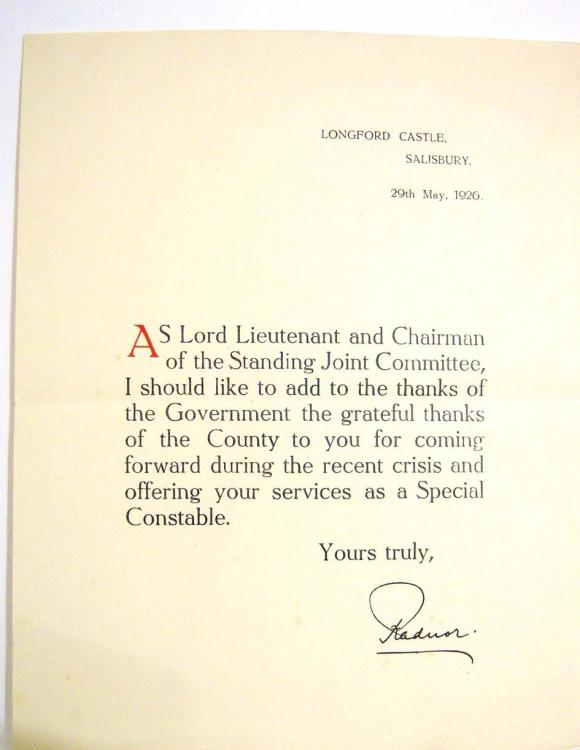
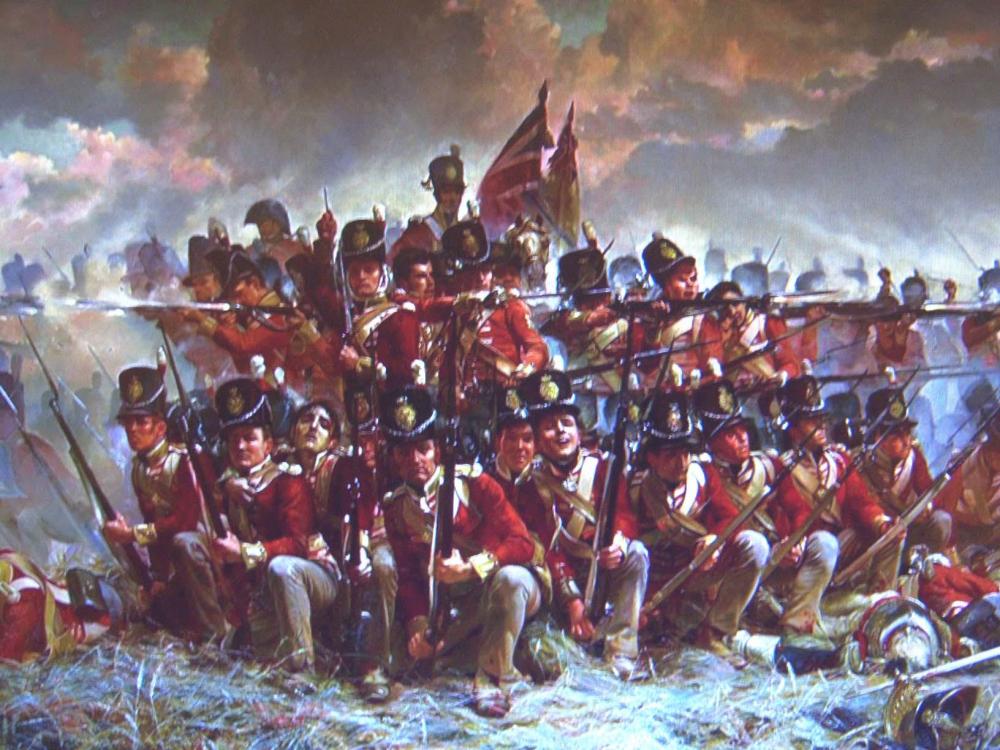
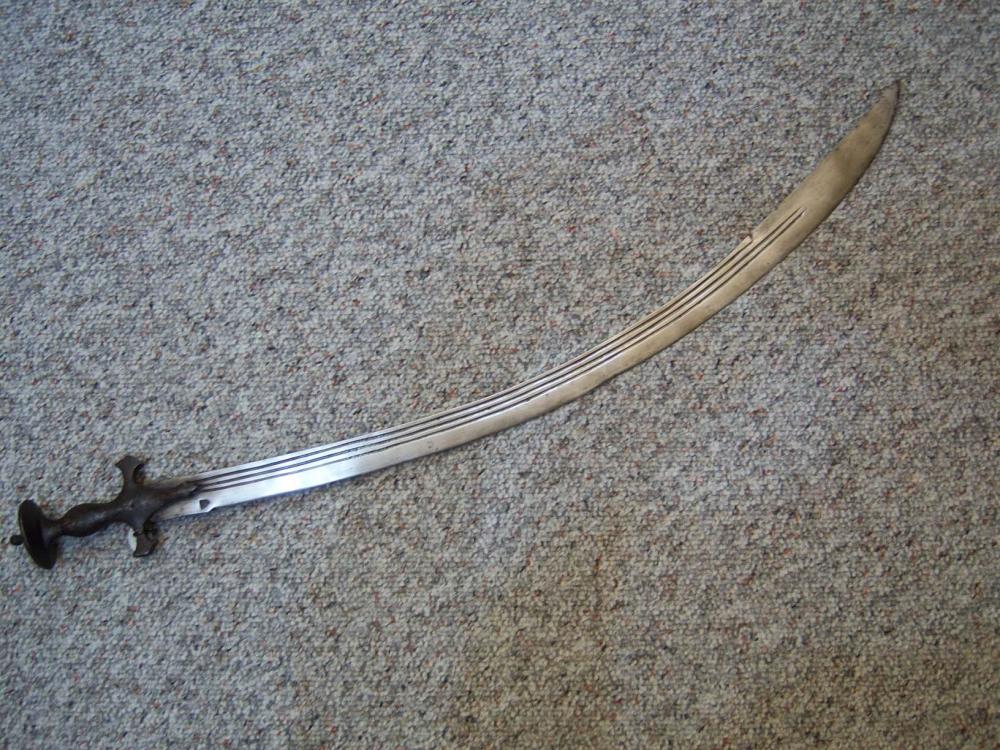
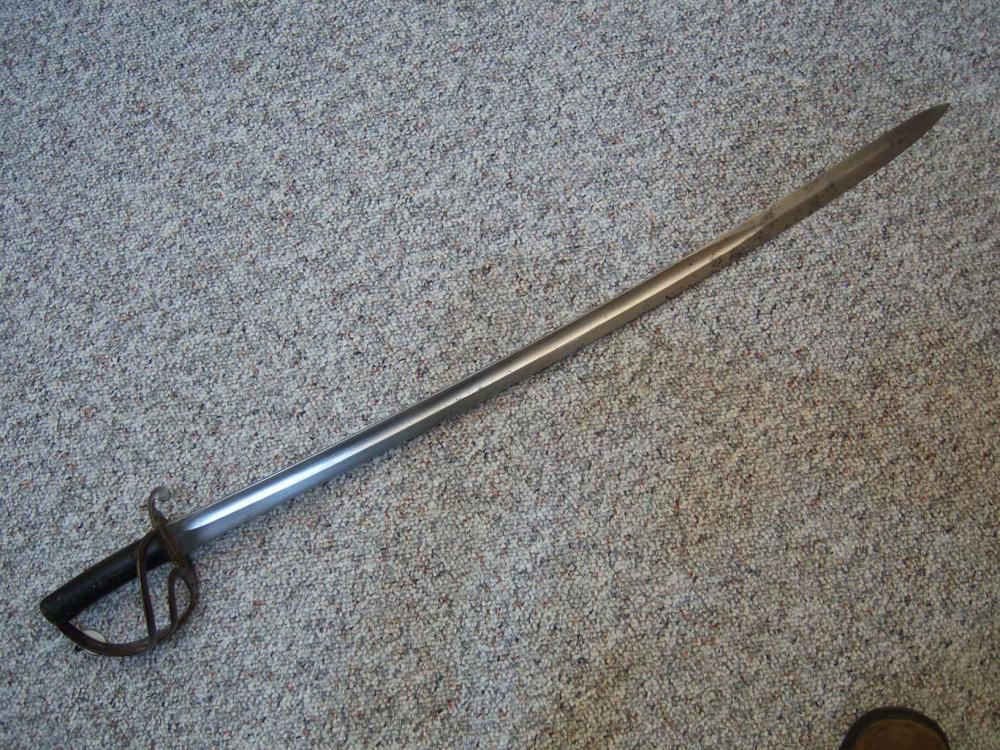
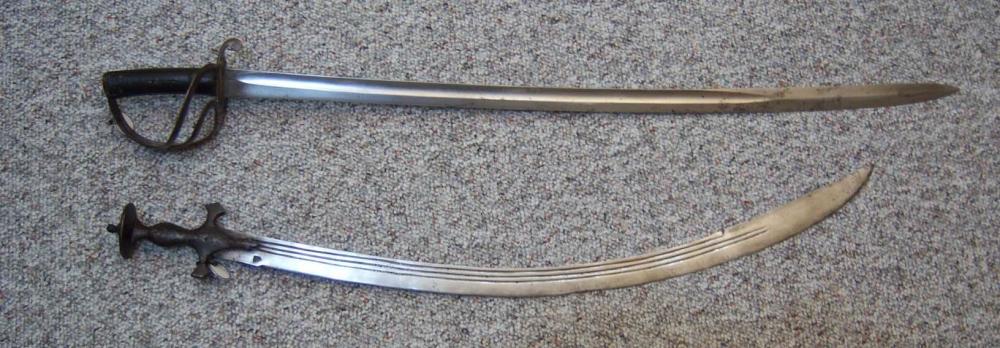
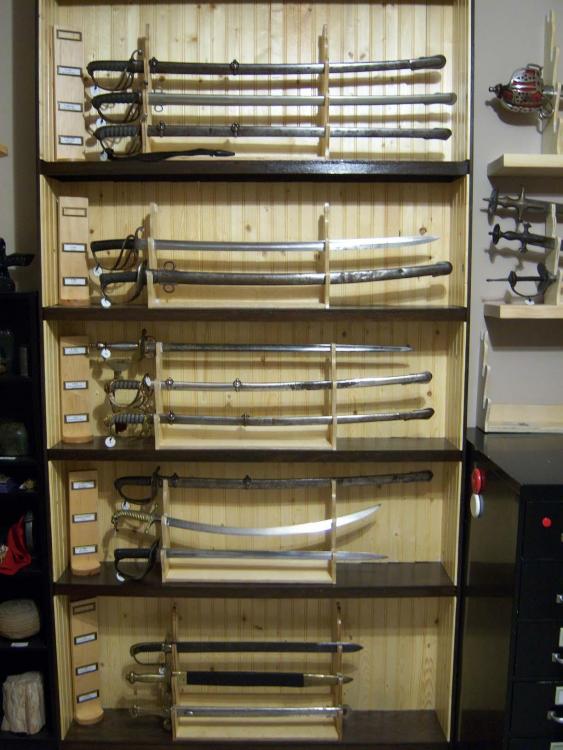
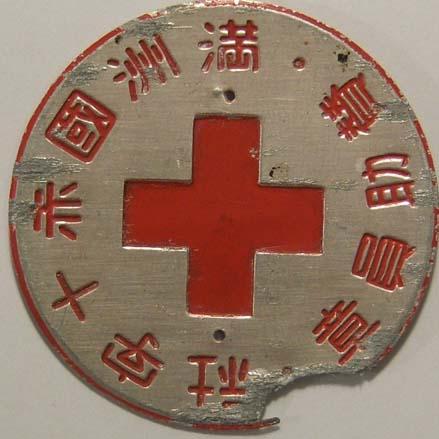

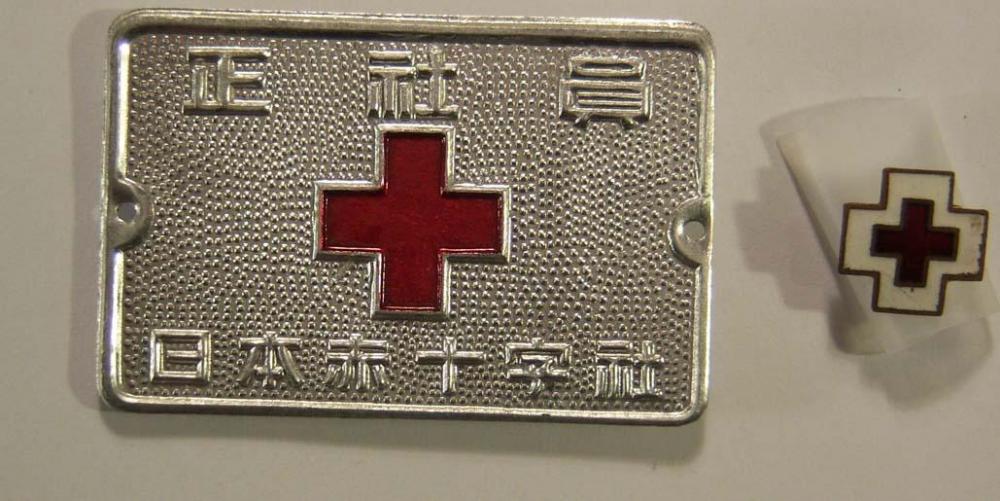
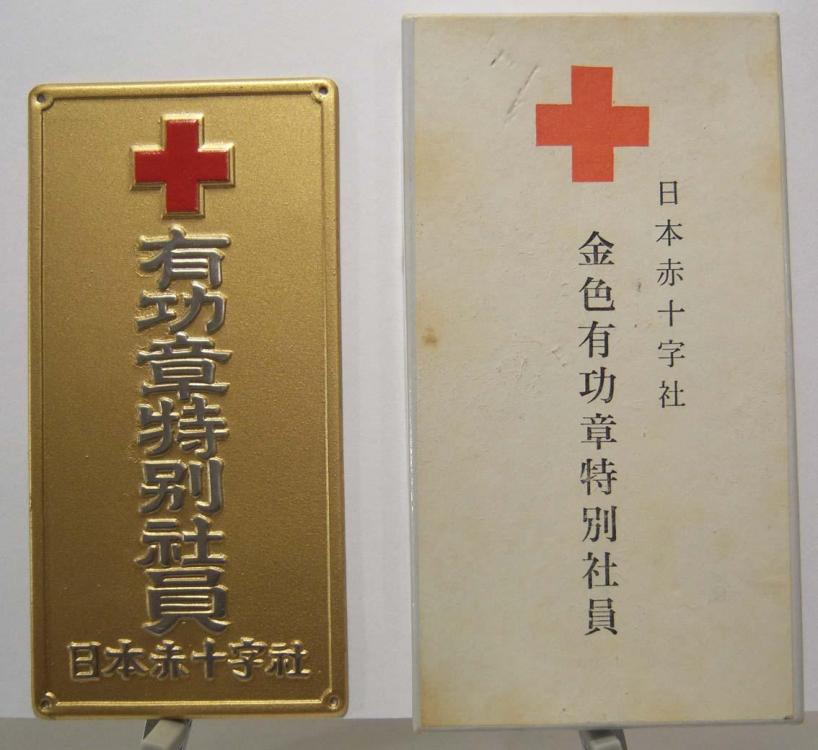


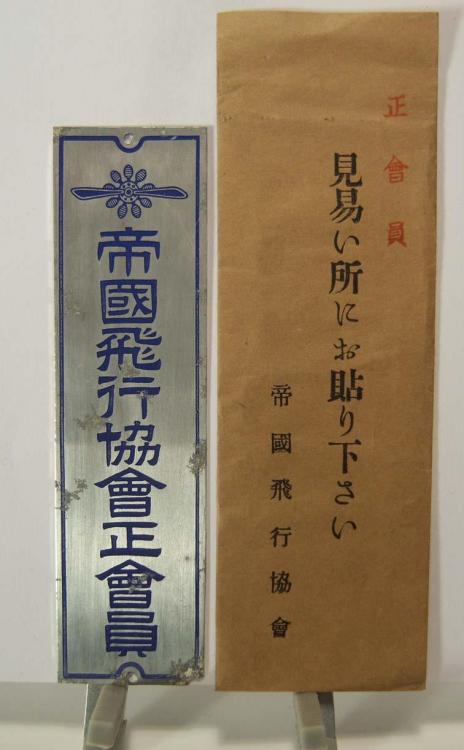

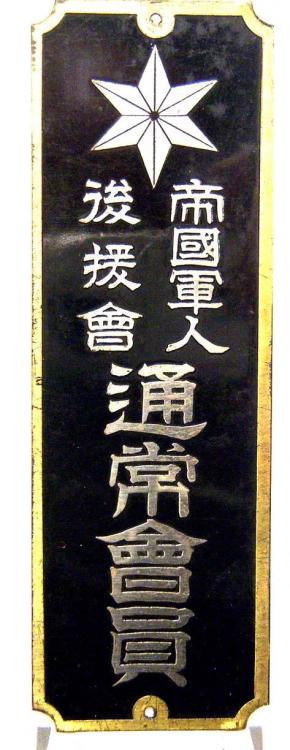
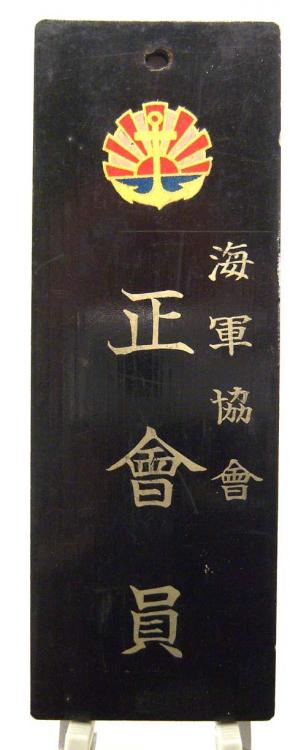

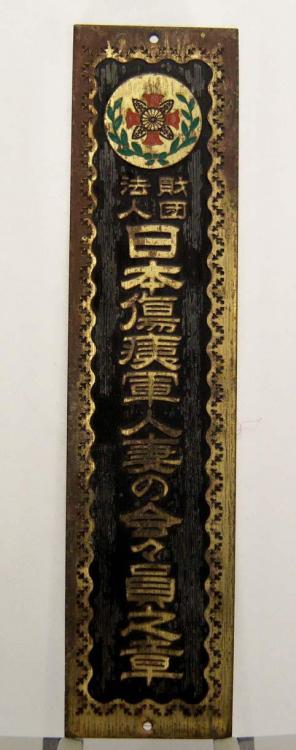
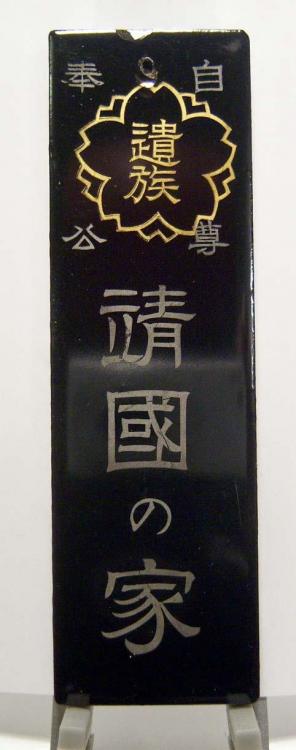

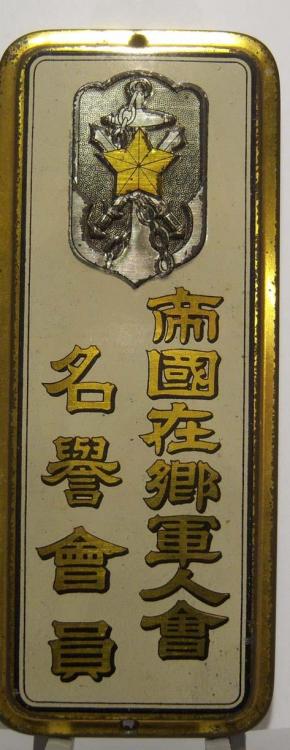




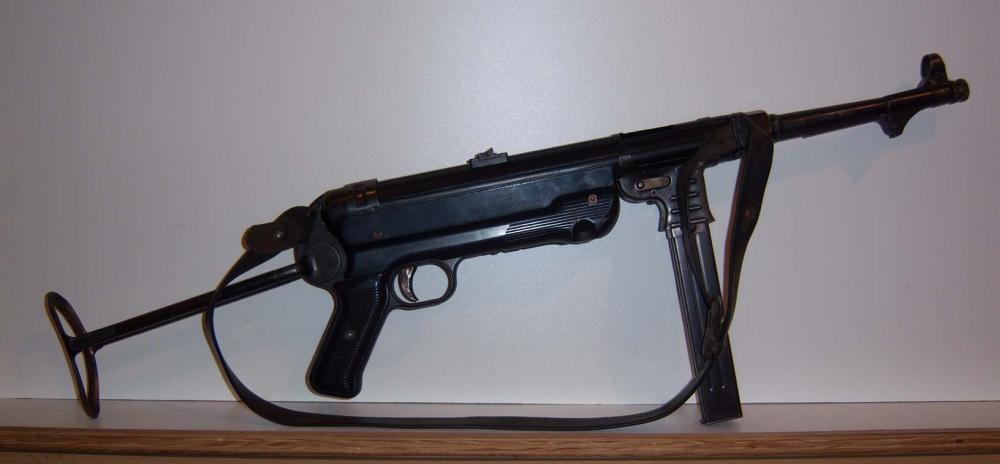
A definitive guide to British sword and scabbard markings?
in Swords & Edged Weapons
Posted
Here is a list of books I would recommend. Listed from the personally most referred to starting at the top, but all are very good books. I could list more but these are the best in their field. All are currently available.
Swords of the British Army, Brian Robson
British Military Swords, Harvey Whithers also look for books by the author on specific swords such as the 1796 Light and Heavy Cavalry
The British Cavalry Sword 1788 - 1912, Richard Dellar Mr. Dellar tells me there is a companion book coming out later this year.
The British Pattern 1796 Cavalry Sword and Other Derivatives, Janusz Jaroslawski
The British Cavalry Sword from 1600, Charles Martyn
Regards
Brian